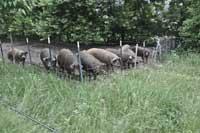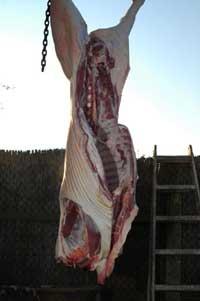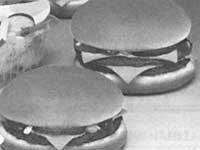A future without slaughterhouse?
2010/05/22 Aulestiarte Lete, Izaro - Elhuyar Zientziaren Komunikazioa

Fermented meat is one that is produced in the laboratory through stem cells and/or animal muscles such as chicken, lamb or pork. Supporters of this alternative say it is healthier than conventional meat, which has the same proteins and has less environmental impact. Time magazine ranks it among the 50 most important inventions of 2009.
With the aim of finding alternatives to meat, members of the New Harvest organization, which brings together scientific efforts from around the world, have highlighted the multiple advantages of meat produced in the laboratory. Among other things, they believe that control of production in the laboratory would prevent diseases like crazy cows or flu A. Also get a light meat and make “hamburgers that avoid infarctions”.
According to them, the procedure will not harm human health.

On the contrary, they have explained that it will be a great benefit for human consciousness and the environment. In short, it could be produced without sacrificing living beings and, therefore, reduce the need for millions of animals to grow in captivity. In this way, this alternative would reduce the current environmental impact of meat production. In fact, the livestock sector is largely responsible for greenhouse gas emissions, and pastoralism has also generated significant costs in the ecosystem.
New York experts believe that new technology will also benefit humanity in general: “In theory, with a single cell you can create the meat that the world eats for a year.”
Too expensive too expensive
It is known that meat that is produced far from pastures and hamlets and “white apron” breeders can generate distrust. However, researchers recall that: “Most of what we eat today also comes from the laboratory, everything is processed.” Milk, cheese or the famous nuggets have been cited as an example.
The secret formula for industrially producing meat in the laboratory instead of growing in farmstead or nursery is a kind of “biomedical” soup. This soup is composed of nutrients from animal blood and microorganisms, where the “cell that could then feed everyone” is placed.

Today, the result is no more than a small sheet of meat of one centimeter in length. But you can strain and add proteins. Following the development of technology, experts consider that between 5 and 10 years can produce these large-scale meat replacement plates, which would have a sufficient hardness to bite and that their flavor can be similar to a traditional chuleta.
The product is designed but the main obstacle to its commercialization is the cost of the process. According to experts, “we need more efficient automated systems that do not require people’s work, and even cheaper components, since the current ones come from biomedical research.” The current price of a laboratory burger could be one million dollars.
In 2002 NASA wanted to promote the consumption of this type of food in space travel. But it was expensive and long and finally betted on a vegetarian diet. Since then, research centers in the Netherlands, the US, Japan, Australia and Scandinavian countries have also invested in developing this alternative.
Published in Ortzadar

Gai honi buruzko eduki gehiago
Elhuyarrek garatutako teknologia





